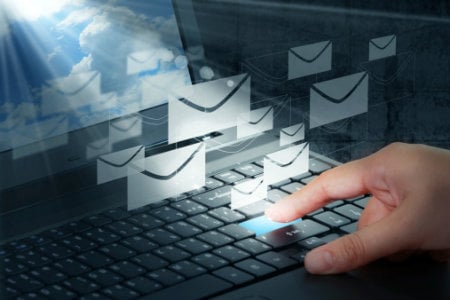 For anyone losing sleep over worries about the future of email, two new reports should put you at ease. According to one a report by the American Press Institute, email is the most common digital activity for adults between the ages of 18 and 34 – also known as Millennials. Even better, according to a second report by Principal Financial Group, Millennials actually prefer to keep in touch with brands through – you guessed it – email!
For anyone losing sleep over worries about the future of email, two new reports should put you at ease. According to one a report by the American Press Institute, email is the most common digital activity for adults between the ages of 18 and 34 – also known as Millennials. Even better, according to a second report by Principal Financial Group, Millennials actually prefer to keep in touch with brands through – you guessed it – email!

So for anyone doubting the continued longevity of email, we’ve got news: email is here to stay. Now, let’s talk about why millennials love email.
Why do Millennials Love Email So Much?
The Millennial generation are digital natives. They came of age in the early 1990s – an era that launched social media, Google and a host of other digital platforms. As a generation, they are breezily comfortable with all forms of digital technology. Indeed, Millennials see email as a dependable, familiar tool they can access anytime, anywhere, whether they’re on a laptop, holding a smartphone or even sporting a wearable device.
At the same time, email is not quite as immediate as social media. Millennial consumers can be aware of an email in their inbox and comfortably let it sit and wait until it’s a convenient time to engage. However, social media is a bit more in-your-face. Social media also tends to act like a giant megaphone, broadcasting conversations out to the public, whereas email allows for more personal, one-to-one conversations as well as practical, business-oriented communications.
Should Businesses Adapt Strategies to Millennial Behaviors?
If you want to be sure you’re reaching Millennial markets in all the right ways, there are several aspects of how this generation interacts with email. Given the size and buying power of this generation, it makes sense that you use this information to drive your strategy. Here’s how:
-
Format for mobile. You probably already know that more than half of all emails are now opened on smartphones. For Millennials, mobile devices are so integral to their lives that 80 percent of them actually sleep with their smartphones by their bedside!
-
Personalization is important. Remember, this is the “ME Generation.” Millennials need to know that they are special and important to you. They expect you to know their tastes, and they want to see personalized offers.
-
Test your timing. The Millennial generation spearheaded the unorthodox-work-hours-movement. Although a certain time of day might be great for older subscribers, it might be all-wrong for groups of Millennials.
-
Use all of your channels. Millennials move seamlessly between devices and platforms, and they expect their marketing to be the same: integrated across email, social media, web, mobile and more.
-
Be authentic.Resist the urge to try to sound like a hipster if that’s just not what your brand is, because Millennials can spot a phony a mile away. And as the authors of a National Chamber Foundation report on Millennials warn, “Once Millennials lose faith in a brand, it’s nearly impossible to win them back. Keeping positive relationships are critical.”
When it comes to updating your marketing strategies, understanding the Millennial love of email – and how the generation uses email – should guide your future efforts. By using this knowledge as general rule-of-thumb practice, and implementing proper personalization, you can engage larger portions of one of the most influential groups in the global market.
Looking for more ways to bring your email marketing into the next generation? Check out our free guide 3 Ways to Use Subscriber Data to Modernize Your Email Marketing.
 Affiliate Marketing
Affiliate Marketing Automotive
Automotive eCommerce and Retail
eCommerce and Retail FinTech
FinTech LeadGen
LeadGen Nonprofit and Political
Nonprofit and Political Payments
Payments Technology Platforms
Technology Platforms Tourism and Hospitality
Tourism and Hospitality
 For anyone losing sleep over worries about the future of email, two new reports should put you at ease. According to one
For anyone losing sleep over worries about the future of email, two new reports should put you at ease. According to one 